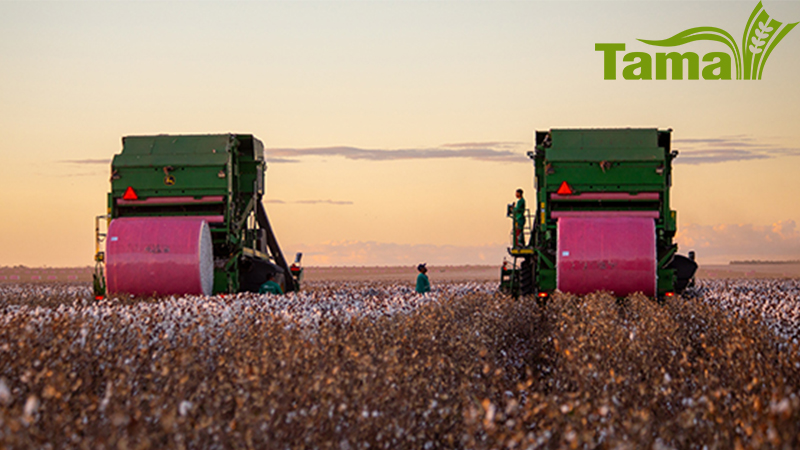Monsanto Donates Marker Technology
Texas AgriLife Research, a part of the Texas A&M System, announced it has received the largest private donation of cotton technology from Monsanto, one of the world’s leading agriculture companies.
The donation, which includes about 4,000 cotton molecular markers and associated information, will be offered to the public domain through the globally accessible cotton genome databases, a move that will benefit research programs and breeders interested in one of world’s key crops, according to John Purcell, global cotton technology lead for Monsanto.
“Farmers are looking for ways to increase productivity on their farms to meet growing demand for food, feed and fiber,” Purcell said. “Last year, we announced a challenge to double production by 2030, using 2000 as the base. We think that’s possible through our research and by working with others in the industry through efforts like this. This donation of molecular markers is an active component of realizing that vision and will help the cotton community achieve that goal.”
Dr. Richard Percy, research leader of the USDA Agricultural Research Service’s crop germplasm research unit in College Station, manages the cottonDB database, which will house the information. He said the donation greatly increases the number of markers now available to the public.
“The cotton genome is very large and complex compared to other plants that have already been mapped,” Percy said. “This donation will stimulate research and development in the cotton industry by providing powerful tools that will ultimately help cotton farmers get more out of every acre. This information, once full publication is made in the coming months, will benefit all breeding programs that use the database.”
Scientists often use genetic markers as a flag to identify the specific location of a genetic trait on a chromosome. By flagging the desired trait, plant breeders can breed plants more efficiently and more accurately.
“Molecular markers serve as a key way that plant breeders can tag genetic traits for fast access the next time, much like you could mark a useful tip in a cookbook and highlight it,” Purcell said. “Monsanto researchers have found areas of the cotton genome that, for example, have disease resistance or high yield potential. Adding markers helps researchers easily find specific traits where and when they need them. Markers let us screen a lot of cotton varieties in the lab before even going to the field. This saves a lot of time and money.”
To provide full utility of the marker set, a detailed academic article has been submitted to the Journal of Cotton Science. Publication is anticipated this summer.
“Texas A&M University and Texas AgriLife Research have a long and storied history of developing strong cotton research,” said Bill McCutchen, associate director for AgriLife Research. “We have numerous projects geared to increased yield, fiber quality, disease resistance and the like, so the more information our faculty have in the form of markers, the faster we can make improvements to benefit cotton farmers.”
Because AgriLife Research is a member of the Texas A&M System, teaching faculty and students will benefit, as well.
Wayne Smith, professor and associate head of the Department of Soil and Crop Sciences, said, “Cotton breeders and their students will mine the Monsanto SSR markers to determine their association with traits of value to the cotton industry. Access to these markers will enhance our graduate student training by providing hands-on experience with cutting-edge molecular tools.”
Monsanto scientists screened the company’s markers against other public databases to eliminate any duplication. This was done so only markers which are truly one-of-a-kind get added to the database. Monsanto and AgriLife Research will submit the markers to globally accessible cotton genome databases, specifically CottonDB and The Cotton Marker Database.









